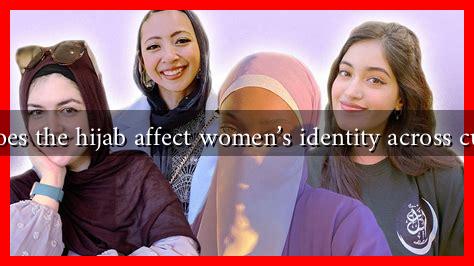-
Table of Contents
How Does the Hijab Affect Women’s Identity Across Cultures?
The hijab, a traditional headscarf worn by many Muslim women, is a symbol of faith, identity, and cultural heritage. However, its significance varies widely across different cultures and societies. This article explores how the hijab influences women’s identity, examining its implications in various cultural contexts, the challenges faced by women who wear it, and the broader societal perceptions surrounding this piece of clothing.
The Hijab as a Symbol of Identity
For many women, the hijab is more than just a garment; it is a profound expression of their identity. The reasons for wearing the hijab can be multifaceted, including:
- Religious Beliefs: For devout Muslim women, wearing the hijab is an act of obedience to Islamic teachings, which emphasize modesty.
- Cultural Heritage: In many cultures, the hijab is a traditional garment that connects women to their ancestry and cultural roots.
- Personal Empowerment: Some women view the hijab as a means of asserting their autonomy and making a statement about their beliefs and values.
In countries like Iran, the hijab is mandated by law, while in others, such as Turkey, it has been a subject of political debate. This dichotomy illustrates how the hijab can be both a personal choice and a societal imposition, shaping women’s identities in complex ways.
Case Studies: The Hijab in Different Cultural Contexts
To understand the diverse implications of the hijab, it is essential to examine specific case studies from various regions:
The Middle East
In many Middle Eastern countries, the hijab is a common sight. For instance, in Saudi Arabia, women are required to wear the abaya, a loose-fitting cloak, along with a hijab. This practice is deeply rooted in cultural and religious norms. However, women in urban areas often express their identity through fashion, choosing colorful and stylish hijabs that reflect their personal taste.
Western Countries
In Western nations, the hijab can be a source of both pride and prejudice. For example, in France, the ban on religious symbols in public schools has led to significant controversy. Many Muslim women feel that the ban undermines their identity and freedom of expression. A study by the Pew Research Center found that 62% of Muslim women in France reported feeling discriminated against because of their hijab.
South Asia
In countries like India and Pakistan, the hijab is often intertwined with regional customs and practices. In India, the hijab can signify both religious identity and cultural belonging among Muslim women. However, it can also lead to social stigma and discrimination, particularly in areas with significant Hindu populations.
The Challenges of Wearing the Hijab
Despite its significance, wearing the hijab can present challenges for women, including:
- Discrimination: Many women face prejudice and discrimination in public spaces, workplaces, and educational institutions.
- Misunderstanding: The hijab is often misunderstood by those outside the Muslim community, leading to stereotypes and misconceptions.
- Internal Conflict: Some women may struggle with their decision to wear the hijab, torn between cultural expectations and personal beliefs.
Changing Perceptions and Empowerment
In recent years, there has been a growing movement among women to reclaim the narrative surrounding the hijab. Social media platforms have played a crucial role in this transformation, allowing women to share their stories and experiences. Campaigns like #HijabDay and #FreeHijab have emerged, promoting awareness and understanding of the hijab as a choice rather than a symbol of oppression.
Moreover, many women are using fashion to redefine the hijab, showcasing its versatility and style. Designers are increasingly creating modern hijabs that cater to diverse tastes, helping to shift perceptions and celebrate cultural identity.
Conclusion
The hijab is a complex symbol that affects women’s identities in various ways across cultures. While it can represent faith, empowerment, and cultural heritage, it can also lead to challenges such as discrimination and misunderstanding. As society evolves, so too does the perception of the hijab, with many women embracing it as a powerful expression of their identity. Understanding these nuances is essential for fostering respect and appreciation for diverse cultural practices.
For further reading on the topic, you can explore resources from organizations like Human Rights Watch and Pew Research Center.


